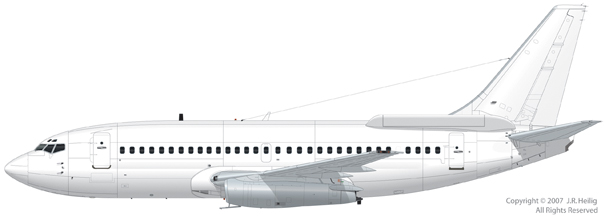It is an HF (High Frequency) antenna. It is used for aircraft to communicate on overseas flights. VHF (Very High Frequency) airband radios are used for normal local and cross country flights.
For a radio to transmit effectively, the internal components of the radio and the external (to the radio) antennae both have to match the frequency used for the transmission. If either does not match, the signal will not go out as strong nor as far. The way the antennae match is by having an antenna that corresponds to the wavelength of the signal. The way you determine the length based on the signal frequency is by dividing 234 by the frequency in megahertz. This gives you your antennae length in feet. Therefore, the higher the frequency, the shorter the antenna needed.
For this next section, we will relate the radio wavelength to energy. The higher the frequency, the shorter the wavelength. In our examples, the shorter the wavelength, the more “energy” the radio wave (or signal) has.
The reason this is important is that radio signals travel in straight lines. They are just like light. They require a lot of energy to punch through obstacles. If the radio receiver is in the radio “shadow” of an obstacle, it will not receive the signal. Since the Earth is curved, this limits the distance a particular radio wave can be received from its source. The line-of-sight (straight line seeing) distance of an observer standing on the Earth’s surface in flat terrain is only 60 miles.
One way to combat this is to use lower frequencies. Frequencies of less than 30 MHz do not have enough of the required energy to punch through the protective obstacle surrounding the Earth called the ionosphere. Instead, the signal gets reflected back down towards the Earth where it gets reflected back up again. The signal will then bounce between sky and Earth for as long as it has energy to travel. Sort of like a billiard ball.
When traveling extremely long distances, like overseas, you have to utilize this signal bouncing feature of HF radios to reach your intended recipient. Radios in the UHF and VHF range can only be used as line-of-sight transmitters because, at frequencies above 30 MHz, the wavelength of their signals will punch through the ionosphere and not get reflected back down to Earth.
P.S. HF antennae can be bent or folded to accommodate less space. The antenna length can even be divided in half or fourth, but may induce frequency matching errors. Dividing it by eighth will compound those errors too much to make it useable in many cases. Any other division will make the antennae not match. To compensate for smaller antennae, internal components of the radio and electrical ballasts and counter-poises on the antennae are used to compensate for the shorter length.



